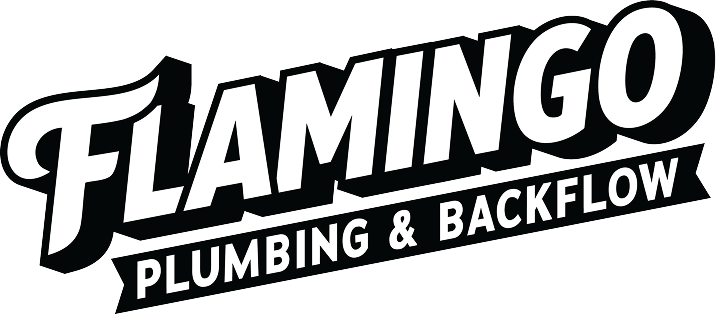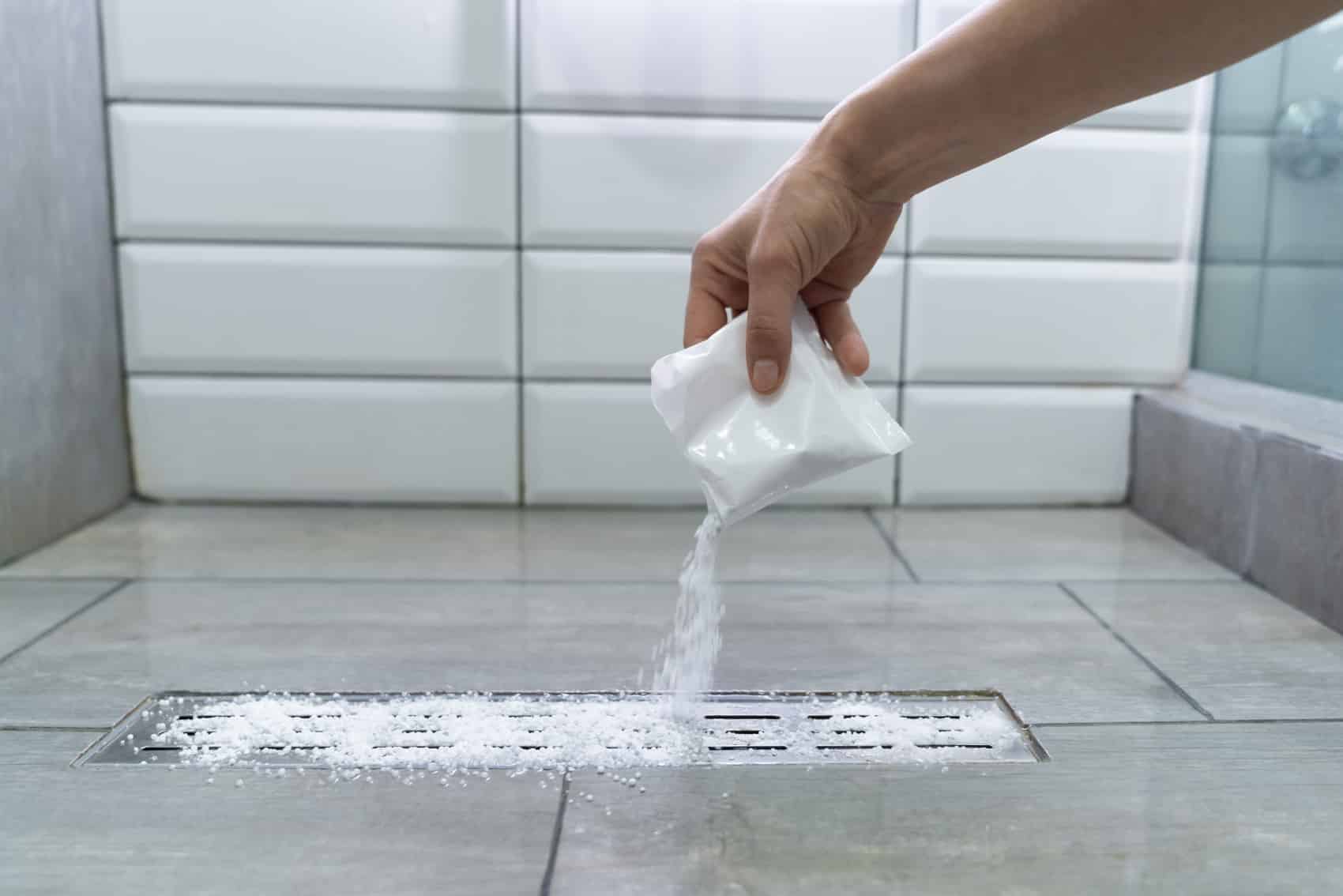There are 7 different types of clogs that can wreak havoc on your shower drains, each stemming from everyday use and habits. Recognizing these distinct blockages is the first step in maintaining a free-flowing drain. From the nasty webs of hair to the stubbornness of hard water deposits, each type of clog requires a unique solution for successful clearing. With a blend of preventative measures and effective solutions, you can keep your shower drain running smoothly.
1. Hair Clogs
Hair clogs are the usual suspects in most shower drain blockages, accumulating over time and entangling with soap scum to form a stubborn barrier. These clogs are not just common; they’re also among the easiest to prevent and fix with the right approach.
Fixing Hair Clogs:
- Use a Drain Claw: A simple, effective tool, the drain claw can grab and pull out hair accumulations when inserted into the drain.
- Baking Soda and Vinegar: Pour a mixture of baking soda followed by vinegar down the drain to dissolve the hair and soap scum. Rinse thoroughly with hot water after a few minutes.
- Plunger: Sometimes, a good plunging can dislodge hair clogs, especially when combined with the above-mentioned method for added effectiveness.
- Drain Cover: Prevent future clogs by installing a drain cover that catches hair before it enters the drain.
- Professional Hydrojetting: For persistent or recurring hair clogs that resist home remedies, our hydrojetting service can provide a thorough and efficient solution, using high-pressure water jets to remove even the most stubborn clogs without damaging your plumbing.
- Regular Maintenance: Regularly remove visible hair from the drain area to prevent it from going down the drain in the first place.
Taking proactive steps like periodic drain cleaning and having the right tools on hand can make hair clogs a less frequent nuisance in your shower.
2. Soap Scum Clogs
Soap scum clogs form when fatty acids in soap mix with minerals in water, creating a hard residue that sticks to pipes and traps hair and other debris. This type of clog is more prevalent in areas with hard water and can lead to reduced water flow and drainage efficiency in showers.
Fixing Soap Scum Clogs:
- Boiling Water: Start with a simple flush of boiling water to soften and dissolve some of the soap scum buildup.
- Vinegar and Baking Soda: A powerful duo against soap scum; pour baking soda followed by vinegar down the drain, let it fizz for a few minutes, then rinse with hot water.
- Enzyme Cleaners: These biodegradable cleaners eat away at organic matter, including soap scum, without damaging your pipes.
- Plumbing Snake: For tougher clogs, a plumbing snake can physically break through the soap scum barrier.
- Water Softener: Consider installing a water softener in your home to prevent future soap scum buildup by minimizing mineral content in your water.
Regular cleaning and attention can keep soap scum clogs from forming, ensuring your shower stays clear and fully functional. For particularly resistant soap scum clogs that withstand these home remedies, our hydrojetting services can come to the rescue. With the power to cut through even the toughest of buildups, hydrojetting can restore your drain’s flow capacity without resorting to harsh chemicals or invasive procedures.
3. Mineral Buildup Clogs
Mineral buildup clogs are a consequence of hard water, where dissolved minerals like calcium, magnesium, iron or copper form deposits within the pipes. These deposits narrow the diameter of the pipes, restricting water flow and eventually leading to blockages in your shower drain.
Fixing Mineral Buildup Clogs:
- Vinegar Soak: Fill a plastic bag with white vinegar and secure it around the showerhead overnight to dissolve mineral deposits. For drains, pour vinegar directly down the drain, let it sit, then rinse with hot water.
- Commercial Lime Removers: Use a commercial lime and scale remover if the buildup is extensive. Follow the manufacturer’s instructions for application and safety.
- Plumbing Snake: A plumbing snake can help dislodge and break apart mineral deposits within the pipes.
- Water Softener System: To prevent future mineral buildup, consider investing in a water softener system that reduces the hardness of your water supply.
- Regular Maintenance: Regularly cleaning your showerhead and drain can prevent mineral deposits from accumulating to the point of causing clogs.
When mineral buildup becomes too dense for standard remedies, hydrojetting offers a powerful solution. The high-pressure water stream effectively clears out mineral deposits, ensuring your shower drain remains free and clear.
Also Read: 6 Easy Tips On How To Unclog A Shower Drain
4. Hard Water Scale Clogs
Hard water scale clogs occur due to the accumulation of mineral deposits from hard water, primarily calcium and magnesium. These minerals can precipitate out of the water and form scale on the insides of pipes and drains, gradually narrowing the passage and reducing water flow.
You can fix these clogs using the same methods listed in #3 above.
What’s the difference between hard water scale clogs and mineral buildup clogs?
There is a difference between hard water scale clogs and mineral buildup clogs, though the two are closely related and often occur together, leading to confusion.
Hard water scale clogs – These clogs are specifically caused by high levels of calcium and magnesium in the water. When hard water is heated, such as in water heaters, kettles, or even in hot water pipes, these minerals precipitate out of the water and form a hard, chalky deposit known as limescale. This scale can build up inside pipes, appliances, and fixtures, narrowing the passage and eventually leading to clogs or significantly reduced water flow.
Mineral buildup clogs – These can include a wider range of minerals, not just calcium and magnesium. This can include iron, manganese, and other minerals that are present in the water. These deposits can form in both hot and cold water conditions and can adhere to the insides of pipes, fixtures, and appliances, leading to blockages and reduced efficiency. While limescale is a common type of mineral buildup, not all mineral buildups are limescale.
5. Small Object Clogs
Small object clogs occur when items that aren’t meant to go down the drain end up there accidentally. This could be anything from a small toy to a bottle cap or a piece of jewelry. These objects can get lodged in the drain, causing water to back up.
Fixing Small Object Clogs:
- Manual Removal: If the object is visible and within reach, carefully attempt to remove it using gloves or tweezers. Avoid pushing the object further down.
- Wet/Dry Vacuum: A wet/dry vacuum can be powerful enough to suck out small objects stuck in the drain. Make sure to create a tight seal around the drain opening for maximum suction.
- Plumbing Snake: A flexible plumbing snake can help hook onto and retrieve objects that are further down the pipe.
- Disassemble the Drain: In some cases, you might need to disassemble the drain trap underneath the shower to access and remove the object. This should typically be done by someone comfortable with basic plumbing or a professional.
- Preventive Measures: Use drain guards to prevent small items from accidentally falling into the drain and educate household members about what shouldn’t go down the shower drain.
Dealing with small object clogs promptly can prevent more severe blockages and potential damage to your plumbing system.
6. Grime and Dirt Clogs
Grime and dirt clogs form from the accumulation of everyday substances like dirt, sand, and small particles that we carry into the shower. Over time, these particles can combine with soap scum and hair, leading to a dense clog that blocks water flow.
Fixing Grime and Dirt Clogs:
- Hot Water Flush: Begin with flushing the drain with a steady stream of hot water to loosen and dissolve some of the grime.
- Plunger: A plunger can be effective in dislodging grime clogs. Ensure you have a good seal and use vigorous plunging action.
- Baking Soda and Vinegar: This natural combination can help break down the grime. Pour baking soda into the drain, add vinegar, wait for the fizzing to stop, and then flush with hot water.
- Plumbing Snake: For more stubborn clogs, a plumbing snake can physically break through and remove the buildup.
- Preventive Rinsing: After activities that involve heavy dirt or sand, such as gardening or beach visits, rinse off outside or in a utility sink to prevent excessive dirt from entering the shower drain.
- DIY Cleaning Remedies: Try one of these DIY Homemade Cleaners for Clogged Drains.
Regular cleaning and mindful practices can significantly reduce the likelihood of grime and dirt clogs, keeping your shower drain clear and fully functional.
Hydrojetting for Grime and Dirt Clogs:
- Deep Cleaning: Hydrojetting doesn’t just unclog; it cleans the pipe walls, removing layers of grime and buildup that traditional methods might miss.
- Preventative Maintenance: By thoroughly clearing the pipes, hydrojetting can prevent the quick recurrence of clogs, making it an excellent part of regular maintenance.
- Safe and Efficient: This method is safe for your pipes, offering a non-invasive way to restore and maintain optimal drainage without the use of harsh chemicals.
7. Mold and Mildew Clogs
Mold and mildew clogs are less common but can occur in showers with persistent dampness and poor ventilation. These fungi thrive in wet environments and can gradually build up in the drain, leading to blockages and a musty odor.
Fixing Mold and Mildew Clogs:
- Bleach Solution: Use a diluted bleach solution (one part bleach to ten parts water) to kill mold and mildew. Pour it down the drain, let it sit for an hour, then rinse thoroughly with hot water.
- Vinegar and Baking Soda: For a less harsh approach, use vinegar and baking soda. This method also helps eliminate odors associated with mold and mildew.
- Non-Abrasive Brush: Sometimes, a non-abrasive brush or an old toothbrush can be used to scrub away visible mold and mildew around the drain entrance.
- Increase Ventilation: Improve air circulation in the bathroom by using an exhaust fan or opening a window during and after showers to prevent future mold and mildew growth.
- Regular Cleaning: Regularly clean your shower and drain area with mold-inhibiting cleaners to prevent buildup.
- Hydrojetting: For deep-rooted mold and mildew issues, consider hydrojetting. This powerful cleaning method uses high-pressure water jets to thoroughly remove mold and mildew from within your pipes, ensuring a long-term solution beyond surface cleaning.
Addressing mold and mildew promptly not only clears the drain but also contributes to a healthier bathroom environment by eliminating potential allergens and irritants.





